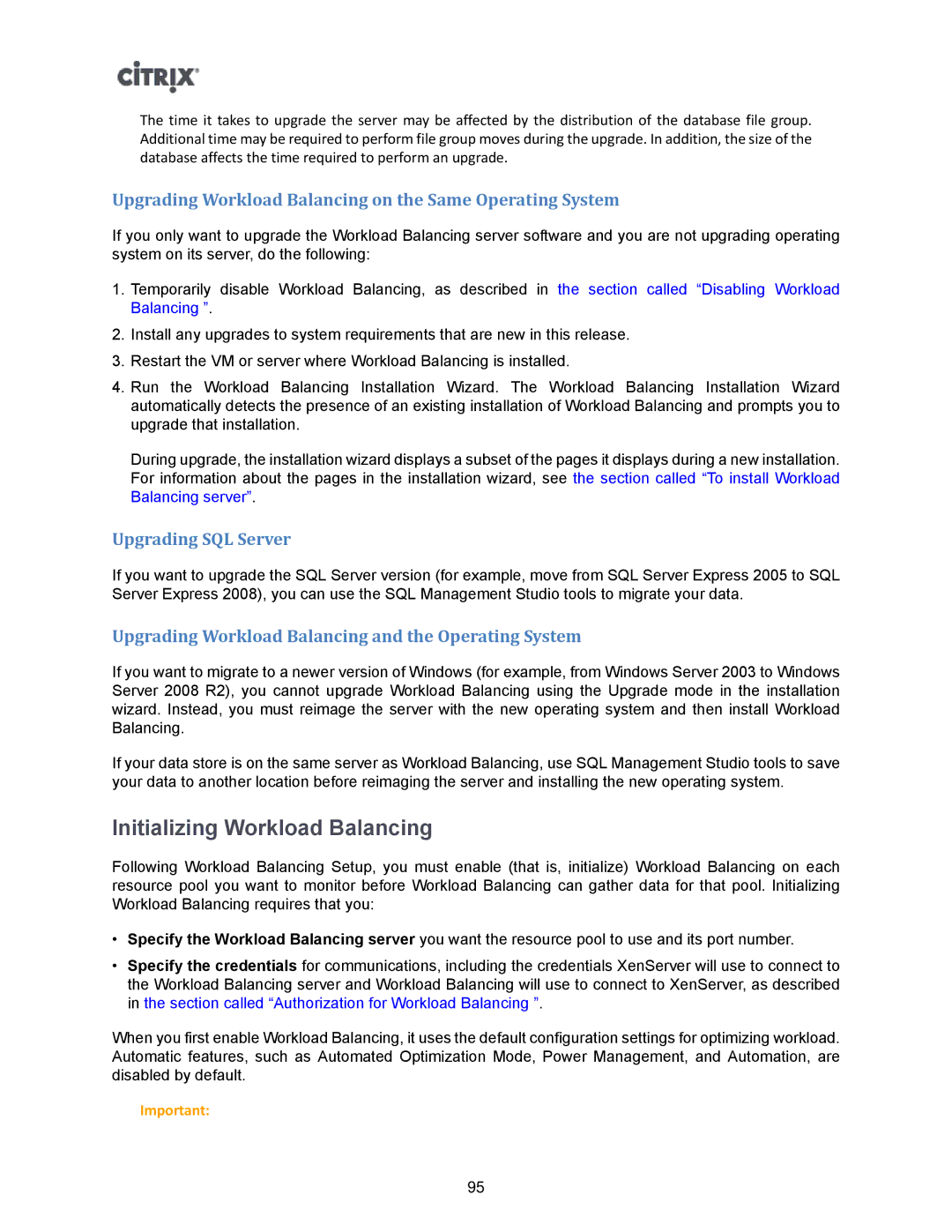The time it takes to upgrade the server may be affected by the distribution of the database file group. Additional time may be required to perform file group moves during the upgrade. In addition, the size of the database affects the time required to perform an upgrade.
Upgrading Workload Balancing on the Same Operating System
If you only want to upgrade the Workload Balancing server software and you are not upgrading operating system on its server, do the following:
1.Temporarily disable Workload Balancing, as described in the section called “Disabling Workload Balancing ”.
2.Install any upgrades to system requirements that are new in this release.
3.Restart the VM or server where Workload Balancing is installed.
4.Run the Workload Balancing Installation Wizard. The Workload Balancing Installation Wizard automatically detects the presence of an existing installation of Workload Balancing and prompts you to upgrade that installation.
During upgrade, the installation wizard displays a subset of the pages it displays during a new installation. For information about the pages in the installation wizard, see the section called “To install Workload Balancing server”.
Upgrading SQL Server
If you want to upgrade the SQL Server version (for example, move from SQL Server Express 2005 to SQL Server Express 2008), you can use the SQL Management Studio tools to migrate your data.
Upgrading Workload Balancing and the Operating System
If you want to migrate to a newer version of Windows (for example, from Windows Server 2003 to Windows Server 2008 R2), you cannot upgrade Workload Balancing using the Upgrade mode in the installation wizard. Instead, you must reimage the server with the new operating system and then install Workload Balancing.
If your data store is on the same server as Workload Balancing, use SQL Management Studio tools to save your data to another location before reimaging the server and installing the new operating system.
Initializing Workload Balancing
Following Workload Balancing Setup, you must enable (that is, initialize) Workload Balancing on each resource pool you want to monitor before Workload Balancing can gather data for that pool. Initializing Workload Balancing requires that you:
•Specify the Workload Balancing server you want the resource pool to use and its port number.
•Specify the credentials for communications, including the credentials XenServer will use to connect to the Workload Balancing server and Workload Balancing will use to connect to XenServer, as described in the section called “Authorization for Workload Balancing ”.
When you first enable Workload Balancing, it uses the default configuration settings for optimizing workload. Automatic features, such as Automated Optimization Mode, Power Management, and Automation, are disabled by default.
Important:
95
